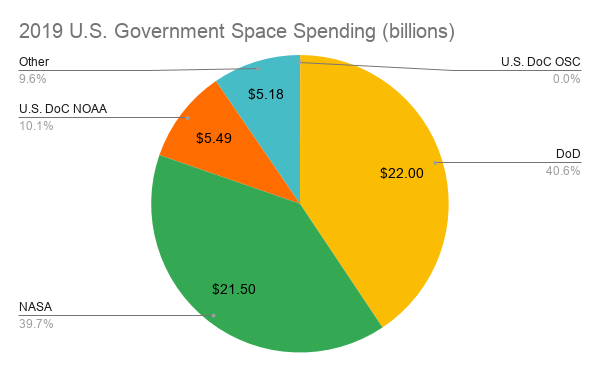Starship and the Gatekeepers of Mars

I feel I must point out that Starship is not operational yet. It may be one day, and that’s what the following analysis and opinion are leaning on. I believe SpaceX will get Starship up and running. It might even make launching things to orbit an inexpensive routine. If both conditions are fulfilled, then the rest may follow.
Starship’s Potential
While reading Casey Handmer’s latest opinions about SpaceX’s Starship efforts, I was struck by how little new information there was about it all. It’s clear he’s fascinated with how much mass SpaceX advertises that Starship will lift to low Earth orbit (LEO) and with the potential low costs of $50 per kilogram. I conducted the same exercise about a year ago and came up with a smaller estimate:
Less than a month ago, Elon Musk reiterated that Starship’s marginal cost for launching 100+ tons to low Earth orbit (LEO) would be less than $1 million. Fixed costs may add a half million to that estimate, so maybe $1.5 million to launch 100+ tons to LEO. That’s $15 per kilogram, which is unbelievably inexpensive. To put that in perspective, if it cost $15 per kilogram for SpaceX to use its Falcon 9 to launch 60 Starlink satellites, the total would be $234,000–an extremely affordable launch option. But it doesn’t. A Falcon 9 launch of Starlink satellites costs around $1,500/kg– $24 million (more or less).
Whether $50 or $15 per kg, the potential opportunities Starship’s capability presents to any industry is intriguing. And that capability is what Handmer points to: Starship’s potential to deploy 100+ tons in orbit for not much money needs to be recognized and incorporated into the planning and architecture of NASA and its host of supporting contractors. He kindly attributes this lack of incorporation into NASA as a misunderstanding:
“Even though Starship was selected for HLS, Artemis hasn’t been redesigned, because Starship is still not understood at the organizational level.”
And his arguments for NASA’s misunderstanding of Starship’s impact are logical. His concerns are valid. Even if NASA were to implement changes today to address them, it would implement them in the traditional NASA way--expensively, slowly, and with no confidence that it will stay the course for longer than the current budget cycle. NASA’s overall direction and budget, after all, are at the mercy of politicians, many of who maintain a very notional grasp of reality.
Computers then, Space Now
NASA is also the visible half of the space industry equation. The DoD is the other significant space operations and industry stakeholder, with its supporting contractors in tow. Just take a gander at an older chart I created last year (for this analysis):

This distribution hasn’t changed much and shows at least two major stakeholders in the U.S. space industrial complex. And if anyone thinks the hidebound, budget-secretive, slow-moving, culturally conservative U.S. Department of Defense is somehow more ready than NASA for what Starship will do to the industry if it comes to fruition...why aren’t you in politics?
Both stakeholders and their influences should remind us, at least a little, of computer history. After all, before the early 1970s, mainframes required a lot of space. Only the military, government, large companies, and their backed research organizations could afford to buy these room-sized machines. I would guess that at the time, not one of these stakeholders was looking for smaller and less expensive computers to do the same work. Instead, they probably wanted computers in which the processor would allow for more terminal connections and increased time sharing. The fancier versions likely allowed batch processing.
The reason to review a little computer history is that it’s obvious neither the military nor the government was ready for the personal computer revolution nor the internet that stemmed from that about two decades later. But I don’t believe that anyone, aside from China, thinks a lack of government or military readiness for these technologies was such a terrible thing. If the world had relied on the DoD and NASA to commercialize computing, then I probably wouldn’t be able to do something as basic as post this analysis online today (and you wouldn’t be reading it on a phone).
A Gated Community (with Barbarians at the Gate)
These are the reasons why I think Handmer’s lament about NASA not being ready isn’t something to worry too much about. But, unfortunately, they are also why I think Handmer missed the mark a little bit about what’s going on, which is the disenfranchisement of traditional gatekeepers.
Both NASA and the DoD have occupied the space industry for a long time, and continue to account for the large majority of spending on U.S. space activities. NASA is essentially pushing an updated and more expensive version of the Saturn rocket as the epitome of its technical prowess. It displays an odd lack of imagination from an organization full of scientists and engineers with essentially unlimited if arbitrarily allocated, funding. Of course, the DoD buys all sorts of expensive communications and Earth observation satellites, but nothing generally groundbreaking for the public.
Both have served as gatekeepers for space projects and activities. However, part of their gatekeeping was accomplished because space projects and activities cost so much. If Starship comes close to holding Musk’s promises, it effectively makes launch more accessible to companies and customers that aren’t from a government. Handmer references this possibility near the end of his article:
“In the meantime, other companies will spring up to exploit Starship’s improved access to space, procuring rides to the Moon, Mars, or asteroids for prospecting, entrepreneurship, services provision, national prestige missions, giant space stations, orbital factories, LEO constellations, and anything else one can dream up.”
At least kind of. Notice the missions Handmer mentions are based on NASA goals? He can’t be faulted too much for that, as the industry’s lack of imagination is a problem that I noted earlier this year.
We are still in the very early days regarding the commercial space industry. SpaceX doesn’t have a functioning Starship available for customers yet (but it probably will, eventually). Then the next hurdle will be whether SpaceX can launch Starship to LEO for the low price Musk thinks is possible. Then we need to see reliability and more critical aspects of the launch system. NASA’s readiness for this system has nothing to do with any of those criteria.
Computers became more valuable and ubiquitous to humanity once the gatekeepers were put on the sidelines. Maybe Starship is the rocket equivalent of a SCAMP or an Altair 8800 (only, at this time, it’s merely a working concept). And the reason government gatekeepers were sidelined while personal computers made inroads is that they weren’t providing anything useful and relevant to the commercial personal computer market, despite the ridiculous sums they paid mainframe computer manufacturers for their products. It took about 32 years to get from an Altair 8800 to an iPhone. It’s been a little over 30 years since the World Wide Web got started.
It appears sidelining of government influences must happen in the commercial space industry for the industry to move beyond its version of computer mainframes. That might happen with Starship, and when it does, it will only be the start of the commercial space industry.




Comments ()